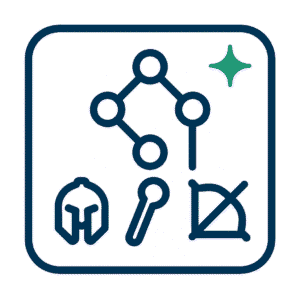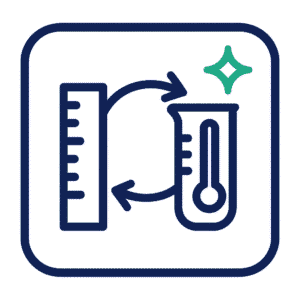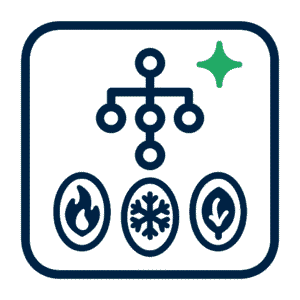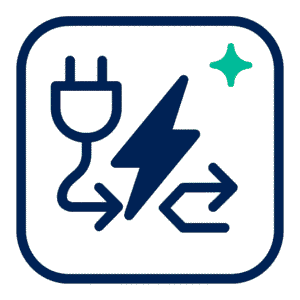What a talent calculator does and why it matters
A talent calculator reproduces the in-game talent trees in a sandbox environment. It shows prerequisites, numeric bonuses (spell power, crit, damage multipliers), and cross-tree dependencies so users can model optimal talent points distribution before committing gold at a trainer. Public calculators also let players share builds and collaborate on a talent synergy planner classic approach — testing whether two small investments in separate trees produce more net value than a single deep investment. Official and community-hosted calculators (interactive Classic calculators mirror the in-game layout) are the natural entry points for planning. See an interactive calculator such as the Classic Wowhead talent calc: https://classic.wowhead.com/talent-calc and community guides like Icy Veins Classic: https://www.icy-veins.com/wow-classic/.
Start with objectives, not numbers
Before opening any classic wow talent build planner, the user should define three clear objectives:

- Primary role and horizon (solo leveling, dungeon farming, raid DPS, battlegrounds).
- Tolerance for respec cost (how often will the spec change month-to-month?).
- Constraints (preferred weapon choices, expected raid composition, faction-specific limitations).
With objectives defined, use a leveling talent path calculator or the calculator’s level slider to model early breakpoints: which 5–10 point talents offer the highest marginal return at level 20–40, and which high-tier nodes require deferred investment. The “best talent tree for leveling” is rarely identical to the best endgame raid tree; the planner’s level-by-level slider makes those differences explicit.
How to use the calculator — a step-by-step workflow
- Load the class tree in a Classic calculator (official or community mirror). Confirm the calculator reflects the Classic-era mechanics rather than retail updates.
- Set the horizon: toggle the level slider to simulate available talent points at progressive levels and identify early-value nodes. This simulates a leveling talent path calculator comparison.
- Draft three builds: (A) Leveling build optimized for mobility/sustain; (B) PvE/raid build (long-run DPS or utility); (C) PvP setup prioritizing crowd control and burst. Save or export each build link for reference.
- Evaluate marginal returns: inspect the increase in concrete stats (damage %, crit chance, threat). Ask whether a few ranks in distant nodes produce the same combined benefit as a frontline node — this is where an explicit talent synergy planner classic approach pays off.
- Share and iterate: post the saved build link into a guild or community channel to get feedback; community guides frequently note loot constraints or role-specific breakpoints.
Respec economics: how much iteration costs and how it decays
Respec cost is the key budget constraint. Classic-era mechanics changed during the vanilla lifecycle; patch documentation and community archives describe decay mechanics that reduce long-term escalation. For background on respecialization mechanics see the Wowpedia page: https://wowpedia.fandom.com/wiki/Respecialization.
Community and support threads provide the operational view used by most players: the first reset is priced low and subsequent resets escalate in steps; the cost then decays over time by a stated per-month decrement until a floor is reached. Because of the stepped escalation, frequent switching without a plan wastes currency. A simple budgeting rule: assume one spec switch per week for raiding cadence and maintain a reserve of 50–100 gold for each raiding character that intends to swap between raid and PvP roles regularly.
Practical examples (warrior and rogue workflows)
Warrior example: use a warrior talent calculator classic to model a Fury→Arms transition if leveling fast is required then raid viability later. Draft a leveling build that reaches key swing nodes quickly (Sweeping Strikes, early Fury throughput nodes), then store the final Arms raid tree as a separate saved link. This minimizes costly mid-level resets: the player levels with a single path, buys the raid respec later and reverts after raiding.
Rogue example: test a rogue talent build classic wow hybrid (Combat/Assassination) in the planner. The calculator clarifies whether two extra points into Improved Eviscerate or a rank in Sword Specialization produce better leveling throughput — and the saved link becomes the spec to use until the raid-ready respec cost is acceptable.
Best practices to reduce respec friction
- Plan minimal viable sets: pick the smallest number of talent shifts that unlock the required capability (a single 5-point node can change queueing dynamics).
- Group by horizon: maintain one saved leveling build and one endgame build per character to avoid ad-hoc changes.
- Use the community: read class-specific pages for the pve talent builds classic wow and pvp talent setup classic guidance before deviating; community templates are built around loot and raid role expectations.
- Account for uptime: if respec cost decays over time, schedule stable periods where the spec remains unchanged to let decay restore future flexibility.
When to pay for experimentation
Small-scale experimentation at low levels typically costs little (initial respec costs are low). The planner should be used to identify the moment when the expected marginal benefit of testing (faster clear speed, better dungeon loot) exceeds the expected gold cost of the respec. For raid leadership, treat respec expense as an operating cost during early progression phases and budget accordingly.
Tools and references
- Classic Wowhead talent calculator: https://classic.wowhead.com/talent-calc.
- Icy Veins Classic class guides: https://www.icy-veins.com/wow-classic/.
- Respecialization mechanics and historical notes: https://wowpedia.fandom.com/wiki/Respecialization.
Final Considerations
A talent calculator is both a design instrument and a risk management tool. The calculator converts tactical choices into measurable outcomes; the respec mechanics convert iteration into a budget line item. Use the planner to draft focused leveling and raid specs, maintain saved links for quick access, and model the gold cost exposure with a talent respec cost calculator or simple stepped schedule reflecting Classic-era cost mechanics. For class-specific guidance consult reliable community templates (for example Icy Veins or official calculator mirrors) and test changes in low-cost contexts before paying high respec fees. Treat talent allocation as a small project with objective, horizon and contingency budgets — doing so lowers waste and clarifies the path from early leveling to endgame role fulfillment.






